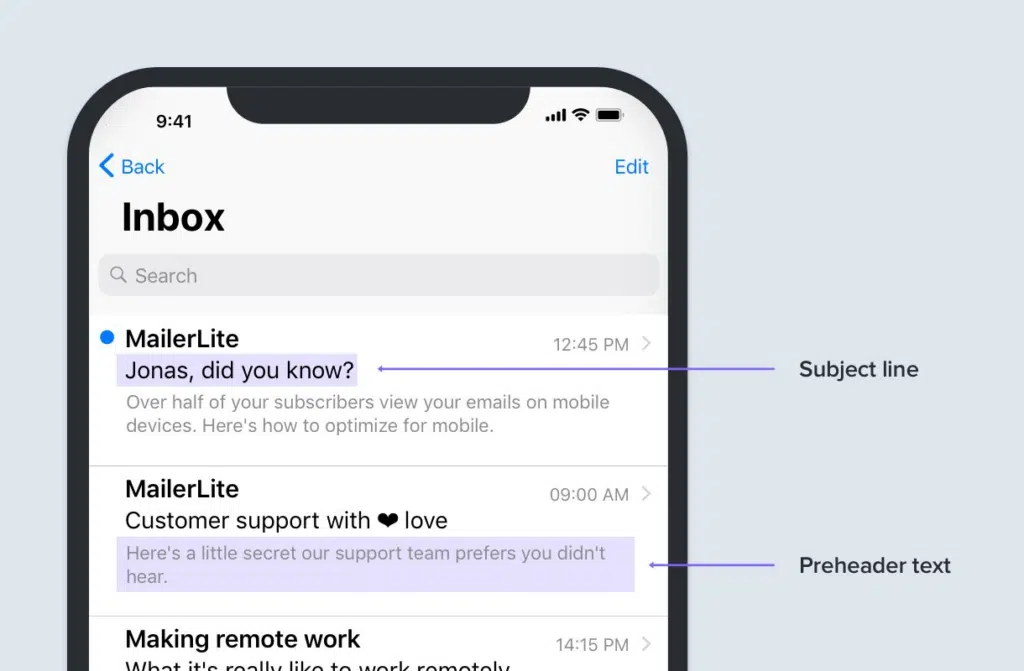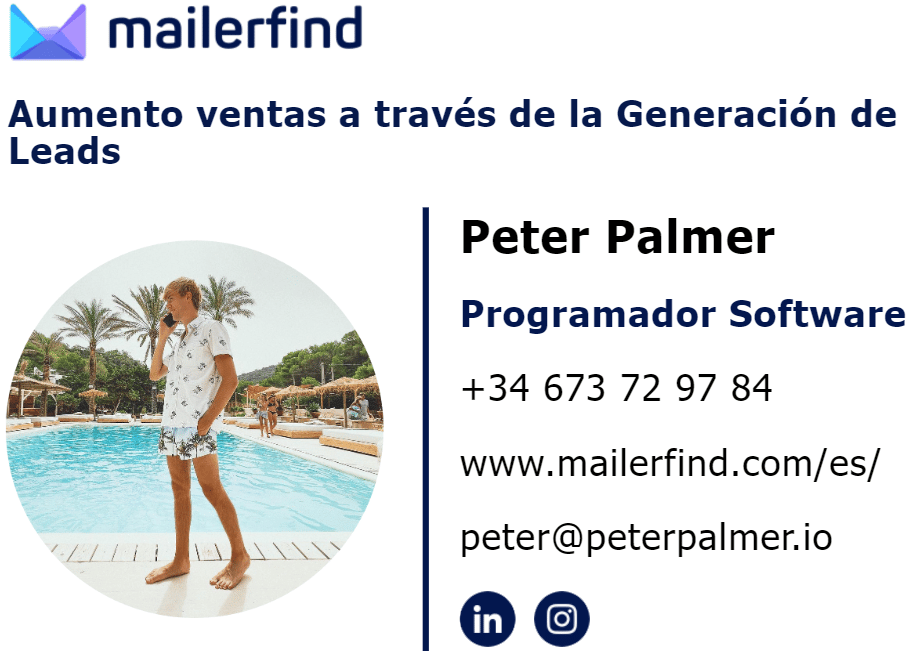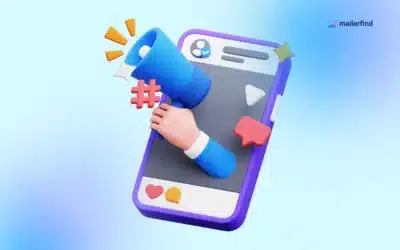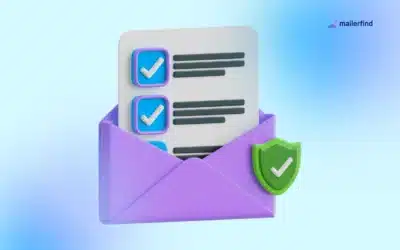What is a cold email?
Cold emails are a marketing tactic in which an email is sent to a recipient without a prior relationship or interaction.
The first cold email is still like a master key that opens the door to the possibility of doing business. It is the first step in a strategic process called the “sales funnel”, in which the first email will be followed by others until you reach…the sale!
Cold email > Follow up > Negotiation > Sale
Find the contact details 🎯
The first thing is to find the email addresses of your potential customers.
There are several ways to achieve this.
While you can buy a data list online, we don’t recommend it, as in most cases you’ll be paying for out-of-date information and incorrect addresses.
That is why we always recommend that you create your own list of ideal clients.
Where can you start?
You could create an ad campaign on Facebook Ads, an attractive landing page with an irresistible offer or “lead magnet” (for example, a free guide) and have people sign up by leaving their email to get it.
Although it is true that advertising on Facebook lately can be especially expensive and creating advertising campaigns, landing pages and content for the lead magnet requires significant time and effort.
You can also use MailerFind, a prospecting tool that allows you to find these same contacts in an easier, more affordable and faster way. In Lesson #2 we told you how to use it, do you remember?
And no, sending cold emails is not illegal.
Many people believe that with the advent of data protection laws like the GDPR, data compilation and cold mailing are prohibited.
This could not be further from the truth.
Sending cold emails is not against the regulations, but you do have to take into account certain legal aspects that we tell you about in this article.
You will see that it is much simpler than it seems.
Ok… And now what do I do with these leads? And the million dollar question:
How do I write a cold email that gets results?
Divide and Conquer: Segment your audience for better results
Your task is to send a personalized and relevant message to the right person.
To achieve this, you must use segmentation (point we saw in Lesson #1).
I know it’s very tempting to say that your product is for everyone and that every person on this planet needs what you offer.
Spoiler Alert:i t’s not.
Even if you’re selling water… there’s a big difference between selling to a low-income segment and selling to elite water connoisseurs, who just want to drink unicorn tears infused water🦄💧.
The good news is that once you specify who you’re sending your email to, it becomes a million times easier to write it.
If you send the email to everyone without segmenting, your message will inevitably be vague, general and weak.
However, if you segment, your email will suddenly become much more personalized and relevant.
10 personalized and relevant emails sent to the right leads far outweighs 100,000 inaccurate emails sent to random people.
Investigate and include content related to your future client 🔎
You need to research, research, and then some more research before writing a single word.
Obviously, you must know very well what you are selling, but also who you are selling to, that is, your objective audience, your different segments or «buyer personas».
And I’m not talking about a spreadsheet full of demographic data.
It’s about knowing their beliefs, their goals, their pain points, their objections, all those things that keep your prospects up at night, etc.
Ask yourself: what are their worries, their pain points, what will they gain from reading your email…do you respond to their needs or arouse their curiosity?
Write an email that focuses on them or in other words, personalize 💌
After this investigation, our favorite magic trick is within your reach: personalization.
The ideal is to include this personalized content at the beginning of the email (or even in the subject) so that the future client knows that it is a personal email, that it has not been sent in a massive way.
People love to be addressed closely.
You can usethe name, surname, company, website address, pain points, etc.There is not limit. Use wisely the data you have collected.

And it’s not just about calling them by name. Personalization is all about showing that you care about them and their needs.
Write a short and precise cold email
Nowadays people have little time and little attention.
Try to avoid emails that are long and boring as they will make the reader lose interest.

Your mantra here is «Less is more».
If you want to increase the chances that your cold email will be read, keep it short and to the point!
Follow up
Follow up, even if they don’t reply.
Let’s say you sent a great email to a potential customer and they opened it but decided not to reply.🙁
I know it can be frustrating to be ignored, but…stay positive!
Maybe you forgot to reply, you lost your mail…or you just aren’t interested.
In any case, it is always better to follow up (respectfully, no despair and harassment).

Tip to improve your results with follow-up emails: space out your mailings. Do not bombard with a shower of emails. Personally we use the tactic of leaving 3 days between one email and another. So we also give them a little time to breathe and respond.
Write an effective subject line🧲
Whether or not your prospect opens your masterpiece depends largely on how good the line is.
It is the first thing people will read when they receive your email and therefore it is very important.
Avoid being:
- Directly focused on sales
- Conventional
- Bland and boring
- That can be misinterpreted
Instead, try to make it:
- Creative and witty
- That arouses curiosity
- Brief
- Natural (that doesn’t sound commercial)
- Benefit related
- Put the prospect in the middle (don’t forget personalization)
Remember that your subject line will be cut off if it’s too long (especially on mobile), so keep it as short as possible.
We will publish an article soon that will go into more detail on how to write effective subject lines, and in which we will show you many examples of subject lines that we have tried ourselves and have worked really well for us.
Pre-Header
The Pre-Header is not that well known But it’s definitely a lethal weapon⚔️.
It appears in the email preview, just below the subject line and is fully customizable.
With this you can attract more attention. I also do not want to dwell on this point, but you can read more if you want about it in this article.

Don’t push the sale
Adjusting our communication style is key when it comes to establishing trust with our potential client.
If there’s one thing we’ve learned, it’s that to sell on the internet, you don’t need to pretend to be someone you’re not. There’s no need to pretend being a marketer or the complete opposite.
Only one thing is needed: to know what the other person wants and to show it to them in the most natural and attractive way possible.
Nothing more than that. Just tell them like you would tell your best friend that you have something that can help him.
Try to sound natural.
I insist, this way the sale becomes comfortable and inevitable.
Try to avoid a commercial, aggressive and insistent tone.
Make it look like you’re not selling, but creating relationships (which is what you really need to achieve).
If you’re unsure about how your email sounds, you can read it out loud and see how it would sound if you were talking to a potential customer.
Include a CTA 📢
Include a call to action to encourage your prospect to take simple actions.
A simple way to ensure that your email is relevant is that in the first email you try to help and add value. Offer solutions to people who may need your products or services.
The cold email CTA can be to send a person to value content that you have created (blog, instructional video, podcast…) or our recommendation, that the call to action has as its goal that the person answers or calls you.
You will sell later after this first interaction: with more emails, for example, or with the information that you have put in the value content that you have shared or in your email signature (website, LinkedIn, contact information…). Remember that your cold email is the top of the funnel.
Although with this arsenal of strategies at your disposal, you’re sure to be the object of desire before you try to sell anything.
Do not brag about the characteristics of your product
Don’t come across as a cocky salesperson talking about the specifications of your product.
Your future customers don’t care if your product has the latest artificial intelligence chip or other technical specifications.

What they really want to know is how you can help them and make their lives easier.
Instead of talking about the features, tell them about the benefits they will experience on a day-to-day basis by choosing your offer!
Add a signature
Transparency in communication is key to building trust.
What better way to show your authenticity than by allowing the other person to see your face and contact details?
Bots, spammers and thieves prefer to remain anonymous, so it is important that you show your true identity.
A phone call or an online meeting are great ways to make a more personal connection, and for extra support, use your profile picture (ideally choose a picture that shows your face).
But, in the first email, you better avoid links. Only put them in cases where it is very relevant.
In your signature, you can include something important, like a link to your website or LinkedIn.

Conclusion
Here’s what we learned today about writing witty and genuine cold emails that add value to potential customers while also converting.
So… Can you achieve so much just with emails? The answer is yes!
People who claim cold emails don’t work DO NOT know how to write good cold emails.
In MailerFind, we trust its effectiveness because it is our main source of customer acquisition.
We hope you liked this post! If you have any questions, you can always contact us.





0 Comments